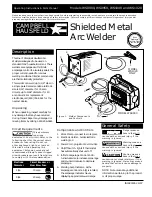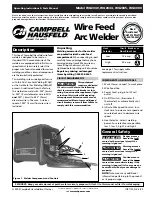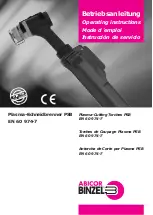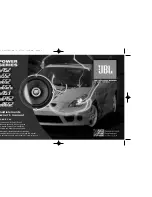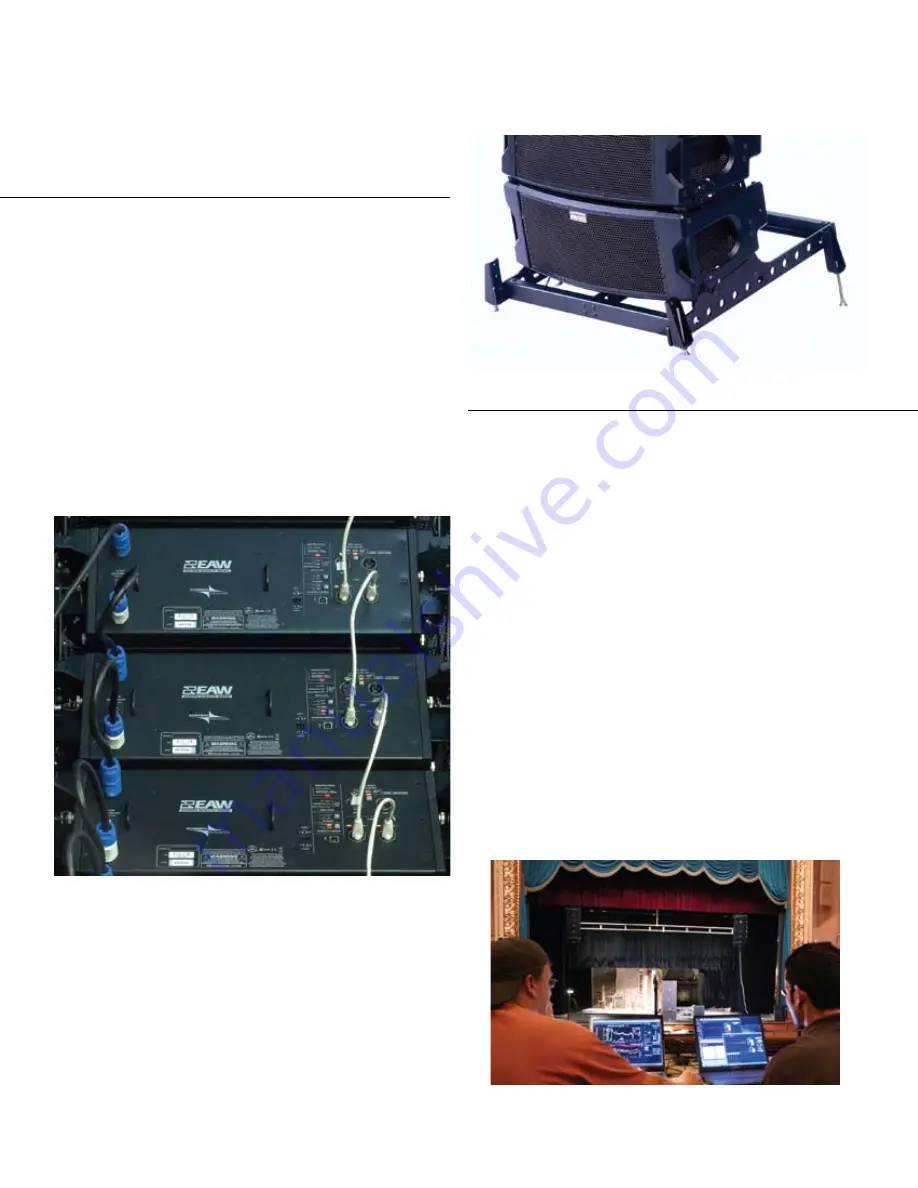
Communication connection options also include U-Net, as well
as a USB port on the back panel for interfacing with the DSP.
In addition, each back panel also offers HF boost and nearfield
contour controls, as well as a range of LED indicators for signal,
limiter, clip, input selection, U-Net status, amplifier status, HF
boost engagement and nearfield contour engagement.
SIMPLE, FLEXIBLE RIGGING
One of the most exciting aspects of the NTL720 is its proprietary
FastLatch™ integral rigging system. Representing more than two
decades of tireless effort in getting this crucial facet exactly right,
the rigging design offers an easy, convenient “hinge-and-latch”
design, with the essential components being two heavy-duty
hinge mechanisms on the back of each cabinet and a latch
mechanism on the underside of each cabinet.
When flying an array, the first module attaches to the flybar,
and then each subsequent module is lifted up (remember, total
weight is under 50 lbs) and hooked to the hinges on the rear
corners of the above cabinet, and then the box is simply pushed
forward by the bottom of the cabinet until it swings up to be
secured by the latch. This process is repeated until the desired
array size is achieved, with cabinet splay angles (a choice of 12,
9, 6, 3, and 0 degrees is provided) easily selectable by carrier
brackets that accompany the hinges. (
Figure 9
)
The hinges hold so securely that the rigger can actually walk
away from the array, and then return later to swing the box up to
its latch above. And because of the light weight, it’s also easy to
fly two modules at once, further saving time. Once the latch has
locked into place, two safety pins are inserted to further secure
the attachment.
Striking NTL720 arrays proves to be as easy – just reverse the
process, including the ability to take down two boxes at a time.
Anyone working with this rigging system finds it extremely fast
and intuitive, with a 10-box array able to be assembled and flown
within about five minutes.
The flybar can also be used as a stable, safe groundstack
platform. It’s outfitted with (optional) threaded feet for adjusting
the level and tilt angle of the array with the use of a hex bit on a
power drill. (
Figure 10
)
REPLACE IT IN PLACE
The rigging design allows individual components and even
entire modules to be replaced within built array structures,
whether flown or stacked. In other words, a cabinet can be
removed for service without having to take down the array.
Removal is easy and safe, with just four integral spring bolts
on each side of the cabinet needing to be loosened to free the
cabinet. And the spring loading keeps the bolts in place within
the array frame so they don’t fall out.
Another option allows removal of the amplifier package
by loosening just six screws on the back panel. Two plug
connectors that directly connect the amplifier to the PCB inside
of the cabinet not only ensure a solid, lock-tight fit, but it also
eliminates the hassles of cable connections.
Yet one more option allows the user to easily remove the front
grille to access the horn, which itself can also be removed to
access all of the drivers. Loosen several screws, and the entire MF
and HF assembly can be lifted out.
Finally, NTL720 cabinets are finished with a tough RoadCoat™
finish that is highly scratch-resistant, and the grille is durable
stainless steel. Cabinets come in black as standard, and EAW can
meet any specialty paint color and finish needs that are desirable
in certain fixed installation situations.
Figure 9
Figure 10
Testing and optimization of NTL720 arrays was done
in real-world conditions at the Stadium Theater in
Woonsocket, Rhode Island.








